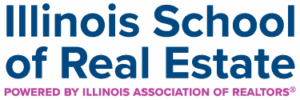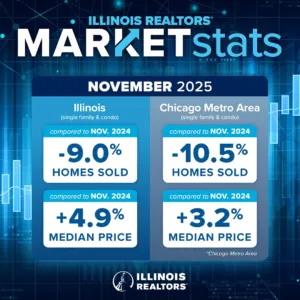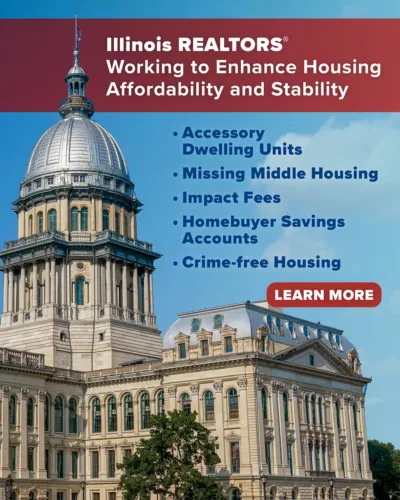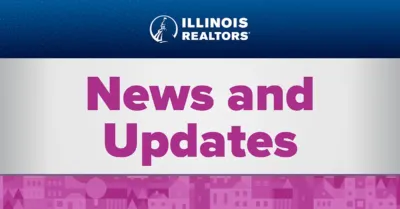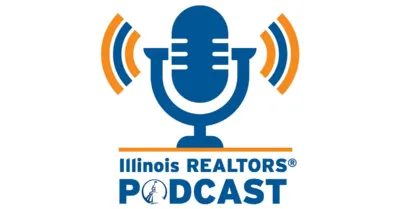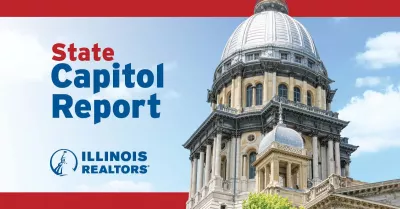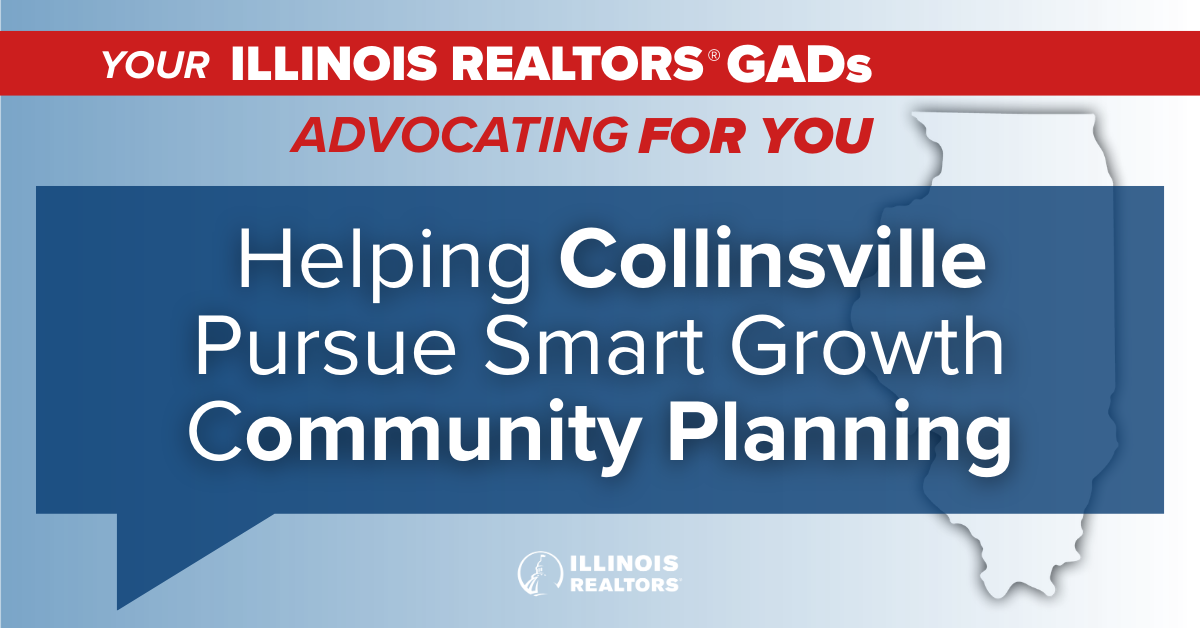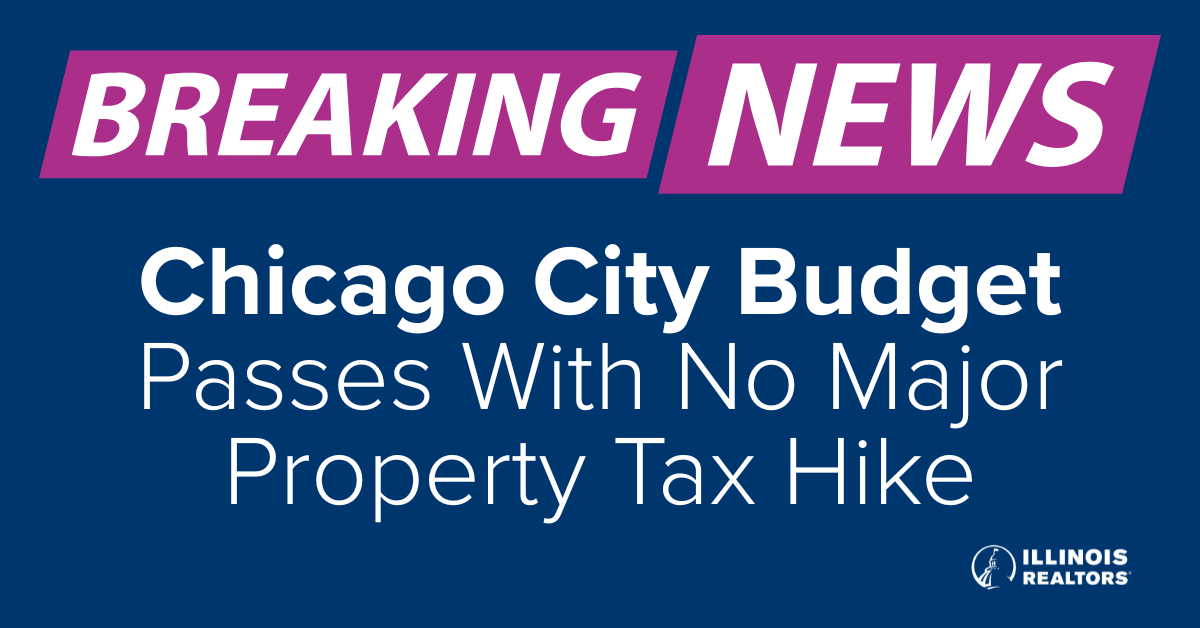The COVID-19 pandemic upended how people work and live and as Illinois continues to transition to a reopened economy, there are few factors to watch, particularly when it comes to housing.
In a popular video series, Illinois REALTORS® talked to U of I economist and housing forecaster Geoffrey Hewings about what current unemployment levels, lower housing inventory, Illinois’ evolving population trends and foreclosures could mean for the state’s housing market in the months ahead.
Now, we’re bringing our conversation with Hewings to you as a podcast.
In this 16-minute interview, Hewings talks about how unemployment and delayed entry into the labor market today could impact homebuying trends down the road, whether he expects ongoing population shifts in and out of Illinois to continue and what he believes may be causing a recent uptick in foreclosure inventory.
You also can find more information about the latest forecast, housing statistics and Illinois housing market in Illinois REALTORS® Housing Market Stats.
Full podcast transcript
Stephanie Sievers: I’m Stephanie Sievers, Senior Editor of Illinois REALTOR® Magazine and I recently spoke to Dr. Geoffrey Hewings, Emeritus Director of the Regional Economics Applications Laboratory, or REAL, at the University of Illinois. Dr. Hewings and REAL provide monthly, quarterly, and annual forecasts based on economic indicators in real estate trends in Illinois. We wanted to hear from Dr. Hewings about how the ongoing COVID-19 pandemic is impacting the Illinois housing market in terms of inventory, unemployment, population trends and foreclosures.
You talked about unemployment and one of the immediate outcomes of COVID-19 was the dramatic uptick in unemployment. Some of your charts look at comparing 2008 to the current situation. Do you have any projections as far as what can be expected with unemployment levels in Illinois, and what that means for the housing that you mentioned and the greater economy?
Dr. Geoffrey Hewings: When we chart the progress of this particular crisis on the Illinois economy, we are seeing some very striking differences to the prior recession in 2008, 2009, through 2012. Illinois entered that recession five to six months after the U.S. economy. This time, it looks as though we are entering the recession exactly the same time as the U.S. Because the drop-off in employment, the increase in the number of job claims has changed in Illinois almost at the same rate as nationally.
But clearly, I think we’re likely to see a very sharp impact. And if you look at the charts, it’s just dramatic. The decline of employment and the increase in unemployment claims, you compare that to 2008, 2009 and the peak week in the last recession was one tenth of the peak we had two weeks ago nationally, and I’m sure within the state.
So, I think the churn that we’re seeing now in that labor market is clearly going to have a depressing effect in the short run on the housing market. But whether it’s sustained or not is critical. So, for example, in our modeling, we estimate that the expected job losses for the year will be about 15 million job years. And the reason we use that term, is a lot of these jobs will not be lost for the whole year.
Somebody might lose a job for two or three months, they put on furlough, and they might be called back in. So, probably 30, 40, 50 million people will be affected directly or indirectly in the economy, but not necessarily for the whole length of the time. And it’s that part of the picture that I think is the most puzzling here. Because, in the previous recessions, people were unemployed, huge amounts of them for long, long periods of time.
And the question is, of those 30 plus million, how many of them are likely to be back at work before the end of this year for example. And most analysts at the moment have no idea how to make a forecast on that because we have no historical basis on which to do it. So, we are probably as challenged as we’ve ever been in terms of our modeling and our forecasting. And I think there’s a very high probability we’re going to be wrong, and let’s hope we’re wrong in the sense that we overestimate the impact so that it doesn’t turn out to be quite so bad.
Stephanie Sievers: Low housing inventory has been an ongoing issue, not just in Illinois, but nationally. Year-over-year inventory has fallen even lower during the pandemic. What can we expect in terms of inventory in the months ahead?
Dr. Geoffrey Hewings: Inventory has fallen once again this year. And if you look at the bar graphs, they have not changed very much in terms of their distribution. We have much higher inventory levels at higher prices, the lowest inventory ever in the middle prices. And then we have a little bit larger increases in inventory in the lowest levels say $100,000 and under.
The only thing that’s happened in the last year is all of those bars have moved to the left. In other words, the inventory has become smaller. So, during the crisis, I think it’s likely that fewer people are going to list their homes for sale. They’re going to be risk averse. They sit and wait, see what’s happening. They’ve seen some of the neighbors have lost jobs, and that has a psychological impact upon how positive you feel.
We have seen the Fannie Mae housing sentiment index has declined; general sentiment indices are also declined. And the other part that’s important is that in the housing market the entrance that we see in the labor market over the next year, and two years, are the ones who are potentially going to be house buyers three or four years down the road. I think that what we’re going to see is a lot of delayed entry into the labor force, and a lot of delayed entry to that market.
So, the impact on the housing market, there’ll be a short term impact, but then will be potentially a longer term impact of delayed effect two or three years from now, as these people that would have been entering the market are probably going to be waiting a year or two to catch up beforehand.
And I think that these impacts are clearly likely to result in having the sort of problems that we had in the last recession as we came out of it. A lot of buyers were frustrated that there wasn’t enough inventory for them to look at. And as a result, they didn’t buy. And it wasn’t because they didn’t have the capacity, but they just weren’t very happy with what they’re seeing.
So, inventory has been a real problem and I think it’s likely to continue to be a problem over the next 12 to 18 months.
Stephanie Sievers: In recent years, Illinois has struggled with the loss in population. Do you see the current situation in COVID-19 having an impact on that?
Dr. Geoffrey Hewings: I really don’t think it’s going to elevate it more than we’ve seen in the last several years. Some of our research has shown that the degree to which people respond to increases in taxes for example is very muted. Most people move out because of career changes. And what has really happened is we have not had as many people coming in. And I think that’s why the negative effects have increased.
But I think people moving for jobs right now is likely to be very depressed, because I don’t see job creation in any other states. And one thing that we’re tracking right now is a new census series that has increased its frequency of publication called new business formation. And almost every state is experiencing year-over-year declines, very few increasing. And we are not doing any worse than any other state in the country, at least for the last three or four weeks.
In the short run we’re going to see a dampening of all migration in the country. People are going to stay put and just wait it out in essence. But I think as we come out of this recession, how the state handles its
fiscal issue is going to really make an important choice for a lot of people who have the capacity to relocate, a lot of businesses that have the capacity to relocate.
So, I think this issue is going to continue to plague us. And, I wish I could say I see some evidence of recognition of this. I hear a lot of discussion, but I don’t see anything fundamentally different has changed.
Stephanie Sievers: If COVID-19 has proven anything, it’s that things can change quickly. How has that affected the data models REAL has been using to use for forecasting?
Dr. Geoffrey Hewings: As I said, with the exception of Katrina and when you have hurricanes or tsunamis, we have this dramatic physical destruction of infrastructure. We’ve seen nothing like this. Our infrastructure is not affected. It’s a pandemic which is affecting humans rather than the physical environment. And I think as a result of this, we are probably going to be even more cautious about our forecasting.
And I think I mentioned a couple of months ago in our report that, the forecasts we were making were based on the pre-COVID world which looks very different from the post-COVID world. And so, I think it’s going to take our models a month or two before it finally begins to say, yes, we are in a period where there’s a lot of negative areas from the economy, and that’s going to have an effect.
But I think that the good thing is the census is now being very helpful in producing these weekly data series that we’re now going to latch onto a model to try to give us at least monthly estimates of major indicators that I think will be helpful. I think if your REALTORS® can feed back to us some comments and some feelings that the people are expressing, that would be very helpful to corroborate the macro data that we get from the census bureau. And this helps us then focus on those parts of the model, which are most likely to change.
Stephanie Sievers: What was happening with foreclosures before the pandemic, and what are you seeing in terms of the data, in terms of future foreclosure trends for Illinois?
Dr. Geoffrey Hewings: What we have seen is through the period, post great recession, 2012 to 2017, the foreclosure inventory—that is the number of houses being sold minus the number of additions to the inventory—was in negative territory. In other words, we were reducing the size of the foreclosure inventory.
But starting in early 2017, that curve started to rise again. And the only thing that I can point to is that Illinois is a legal state when it comes to foreclosure problems. And Xian Fang Bak, who was supported by Illinois REALTORS®, thank you very much and is now working for Fannie Mae, in her analysis, she estimated that it takes somewhere between six and seven years in Illinois from the time of a foreclosure notice being issued, to the time that it becomes an REO, for example.
This process then in 2017, may be the end of the negative impacts of the foreclosure property, but finally those properties are getting adjudicated, and a lot of them are being added to the inventory. But in the last three years, that curve has risen again, very steeply. And now we’re getting significant positive additions to the foreclosure inventory every month.
What I suspect is that we’ll get some of the repeat and part of that as to the issue of forbearance, something like 4 million U.S. mortgages have now requested forbearance. And the question is then, and how long? And the longer that goes on, two likely outcomes. People are going to remain in the state because they have no fiscal capacity to move, or they will end up foreclosing, and either moving into an apartment or moving to some other part of the country.
Some research that colleagues at the Federal Reserve Bank of Chicago have undertaken have revealed that there are significant longer-term lingering effects of delayed payments on credit cards, affecting people’s credit ratings, which then affects their capacity to obtain a mortgage or a loan at some point later in their life.
It also depresses the spending on other goods and services because they have to allocate an increasing share of their weekly or monthly incomes to pay off the accumulated debt. So, not just the monthly mortgage, but the fact that they’ve missed two or three other months. So, I think this is likely to stave off in the short run, a lot of foreclosure activity, but it may just be delaying an inevitable process that may see an increasing foreclosures in six months, nine months or a year.
I think this process with the foreclosure as it takes so long in Illinois, we may be looking at this problem in 2024, 2025 and 2026 as a legacy from this current recession. Foreclosures are obviously very painful to the individuals and so on and so forth. But we’ve had several months post 2012, where the reason that prices increased was because of increases in prices of foreclosed properties. Regular houses, the prices were not changed very much.
As we get to process these foreclosed properties and as they hopefully enter the market before, they deteriorate, they can contribute significantly to the viability of that housing market. So, it’s not always entirely negative, but again, for the people involved in it, it’s a very negative process.
Stephanie Sievers: Thank you for listening to this conversation with Dr. Hewings. You can find more information about the latest forecast, housing statistics and Illinois housing market at https://www.illinoisrealtors.org/marketstats.

